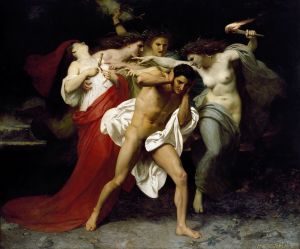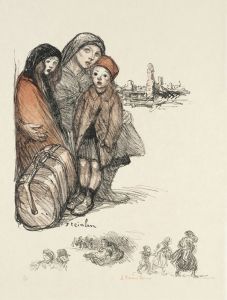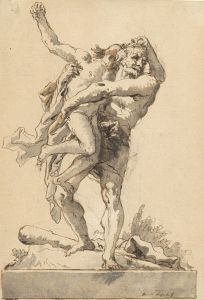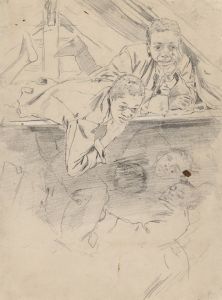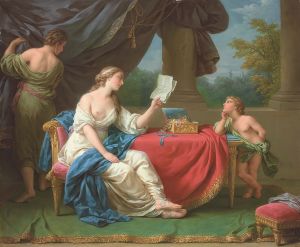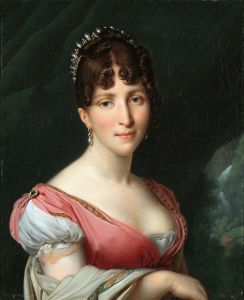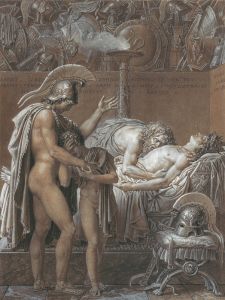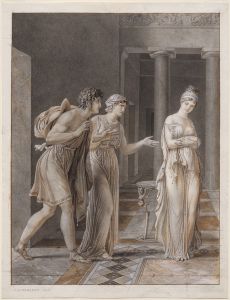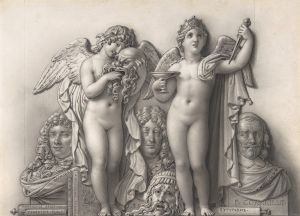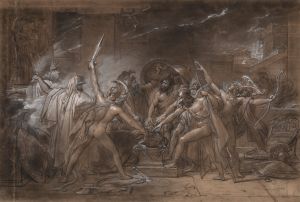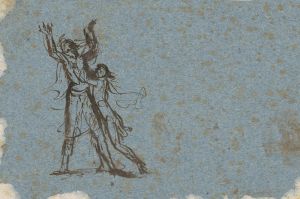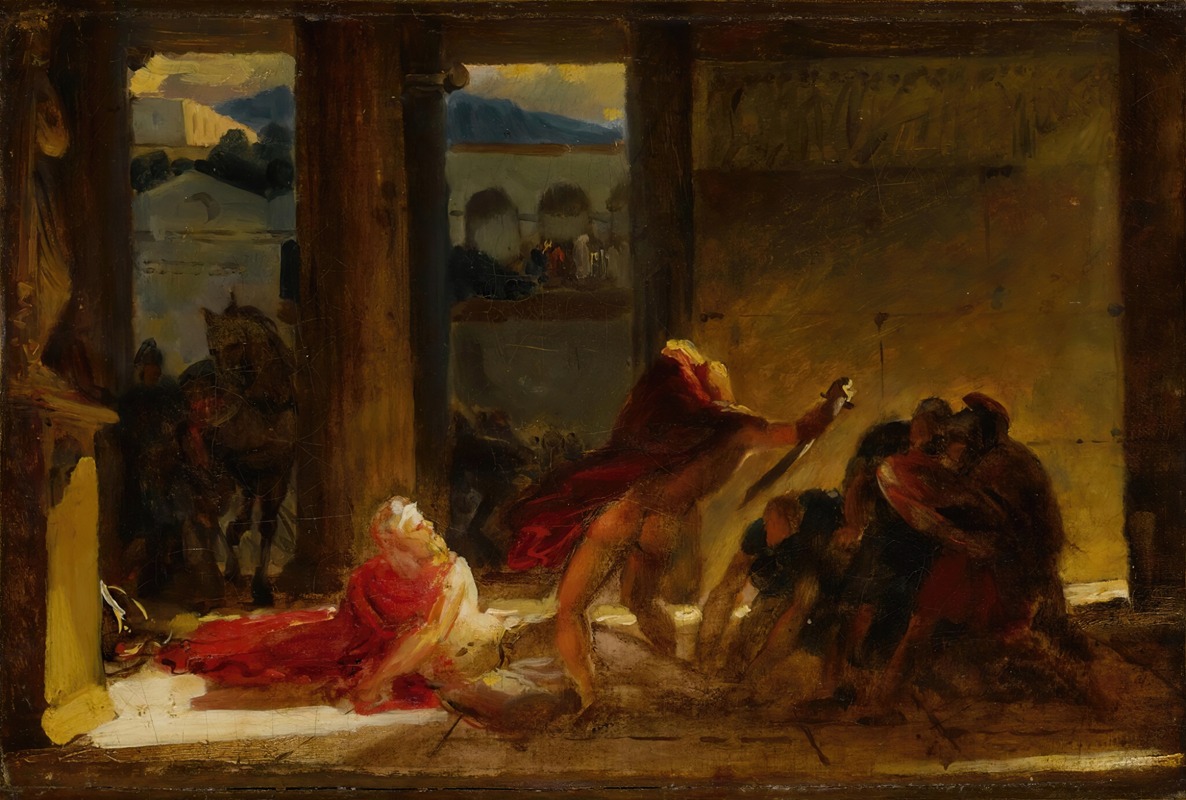
The Death of Pyrrhus
A hand-painted replica of Anne Louis Girodet-Trioson’s masterpiece The Death of Pyrrhus, meticulously crafted by professional artists to capture the true essence of the original. Each piece is created with museum-quality canvas and rare mineral pigments, carefully painted by experienced artists with delicate brushstrokes and rich, layered colors to perfectly recreate the texture of the original artwork. Unlike machine-printed reproductions, this hand-painted version brings the painting to life, infused with the artist’s emotions and skill in every stroke. Whether for personal collection or home decoration, it instantly elevates the artistic atmosphere of any space.
"The Death of Pyrrhus" is a painting by the French artist Anne-Louis Girodet-Trioson, created in 1800. Girodet-Trioson was a prominent painter during the late 18th and early 19th centuries, known for his neoclassical style and dramatic compositions. He was a student of Jacques-Louis David, one of the leading figures of the neoclassical movement.
The painting depicts the death of Pyrrhus, the king of Epirus, who lived during the 3rd century BCE. Pyrrhus is best known for his campaigns against Rome, which gave rise to the term "Pyrrhic victory," referring to a win that comes at such a great cost that it is tantamount to defeat. Pyrrhus met his end in 272 BCE during a street fight in Argos, a city in the Peloponnese.
In "The Death of Pyrrhus," Girodet-Trioson captures the chaotic and violent nature of Pyrrhus's demise. The composition is filled with dynamic figures and intense expressions, characteristic of Girodet-Trioson's dramatic style. The painting shows Pyrrhus at the moment of his death, surrounded by soldiers and citizens of Argos. The scene is marked by a sense of turmoil and confusion, with bodies entangled in combat and expressions of shock and horror on the faces of the onlookers.
Girodet-Trioson's use of light and shadow enhances the dramatic effect of the scene. The central figure of Pyrrhus is illuminated, drawing the viewer's attention to his fate. The artist's meticulous attention to detail is evident in the rendering of the figures' anatomy and the intricate depiction of their armor and clothing.
"The Death of Pyrrhus" reflects the neoclassical interest in historical and mythological subjects, as well as the period's fascination with themes of heroism and tragedy. Girodet-Trioson's work often explored such themes, and this painting is a prime example of his ability to convey complex narratives through visual art.
The painting is housed in the Louvre Museum in Paris, where it is part of the museum's extensive collection of neoclassical art. It remains an important work for its historical significance and its representation of Girodet-Trioson's artistic prowess.
Overall, "The Death of Pyrrhus" is a testament to Anne-Louis Girodet-Trioson's skill as a painter and his ability to capture the drama and intensity of historical events. The painting continues to be studied and admired for its artistic and historical value.





